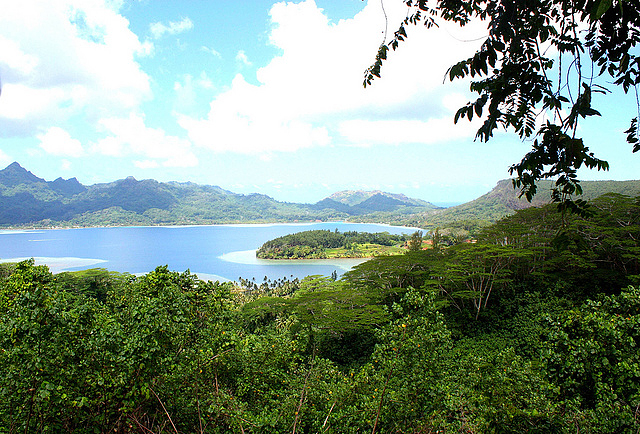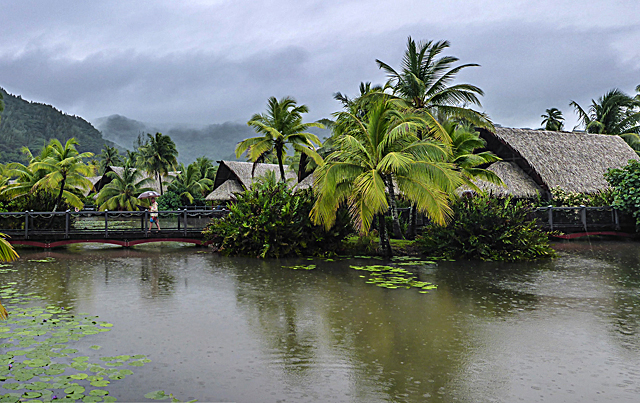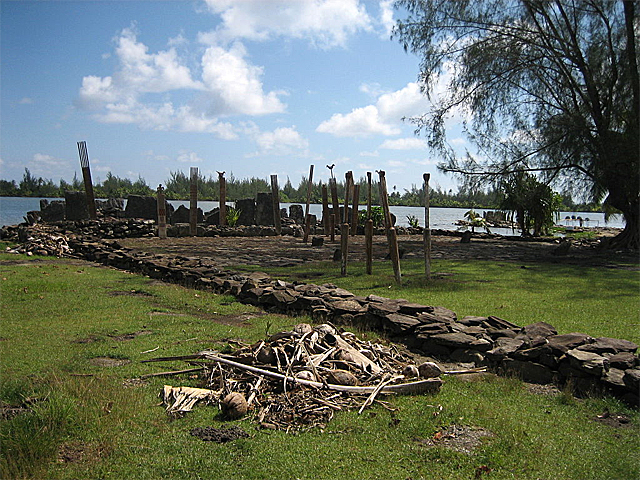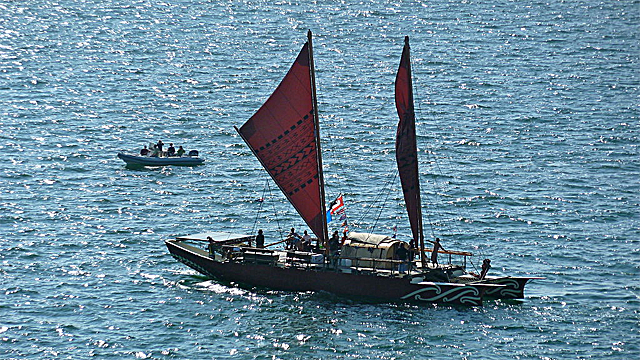Scholars have found evidence that about 800 years ago people used large, seafaring canoes to travel between the Society Islands and New Zealand, a distance of nearly 3,000 miles. A report in a New Zealand newspaper last week explained why experts consider the long-distance travels of the Tahitians, and other Polynesians, back and forth over the vast reaches of the Pacific Ocean to be a near certainty.

One of the primary sets of evidence has developed from two different large, but quite ancient, canoes that were excavated by archaeologists, one on Huahine in the Society Islands and the other more recently on the South Island of New Zealand. The author of the newspaper article, Gerard Hindmarsh, sets the scene for his piece by writing that Polynesians living in the Society Islands, who are generally known as “Tahitians,” refer to Huahine as “the wild island” because of its lush tropical vegetation.
Located just 192 km northwest of Tahiti itself, a short flight, the author was overwhelmed by the beauty of the island as his plane landed. Compared to other nearby islands, it has relatively few tourists. The islanders are proud of the fact that their ancestors were the last in the Society Islands group to accede to French imperialism and give up their independence. The other Tahitians say about the 6,300 people on Huahine, “Obstinacy is their diversion,” according to Hindmarsh. He does not mention that Robert Levy, a prominent anthropologist, did fieldwork in a small Huahine village as the basis for much of his important 1973 book Tahitians: Mind and Experience in the Society Islands.

The author stayed at the Maitai Lapita Village Hotel, a tourist lodge in Huahine’s major town, Fare, located on the northwest coast of the island. The hotel was built on the grounds of the older Bali Hai Hotel, which was destroyed by a massive storm in 1998. It’s an important location. When that older hotel was being constructed in the 1970s, workmen were dredging a swamp in order to construct some ornamental ponds when they encountered interesting objects in the muck.
According to Peter Owen, the owner of the Maitai Lapita lodge, the workers immediately contacted an archaeologist named Yoshiko Shinoto, who happened to be working on Huahine at the time. Dr. Shinoto conducted an excavation that uncovered hundreds of artifacts. One of the most important was a large, sea-going canoe, including the mast. Some of the artifacts he turned up are now in a museum in Tahiti, some are at the Bishop Museum in Hawaii and others were reburied to satisfy local concerns.
Mr. Hindmarsh compared photos of the canoe from Huahine with a more recent, nearly identical canoe that was found in 2011 on the northwest coast of New Zealand’s South Island. The Anaweka Waka, a large canoe (waka) found at New Zealand’s Anaweka Estuary, bore remarkable similarities to the Huahine canoe discovered many years earlier. Radiocarbon analysis indicated that they both dated from the 1200s and that they were technically quite similar.

More convincing even than the apparent similarities was a turtle design that was carved onto the hull of the New Zealand canoe. It was of considerable interest because sea turtles are normally found in tropical waters, not the temperate seas around the South Island. Sea turtles are relatively unimportant to Maori iconography as a result—they are much more important to the Tahitians. Finally, the turtle carved on the canoe is nearly identical to a petrograph carved on one of the Marae, a stone religious structure on Huahine.
The author pointed out that many other arguments have been made for the frequency of connections across the Pacific by the Polynesian peoples in prehistoric times. He cited a couple. In 1916, an ethnographer in New Zealand named Elsdon Best interviewed indigenous people from the Society Islands and produced a study of their language. Best found that many place names in New Zealand bore striking resemblances to place names from the islands around Huahine. He also argued that a myth about an island in French Polynesia named Motue’a, where a dreaded monster was reputed to live, was brought to New Zealand and is remembered locally, detail by detail, almost exactly like its sibling legend in the Society Islands.

The last bit of evidence covered by Hindmarsh is the familiar argument that sailing across the Pacific would have been difficult in open canoes without technological guidance devices and no way to return against contrary winds—but the Polynesians managed anyway. He reviewed the efforts of the modern father figure of the sea going heritage of the Pacific, Pius Mau Piailug (the newspaper article last week spelled his name “Piaileg”).
Piailug was born on the small coral atoll of Satawal, near Ifaluk in the Federated States of Micronesia, and took a strong interest in traditional navigation techniques by sea from an early age. Later in life, he shared his knowledge with the Polynesian Voyaging Society in Hawaii and fostered a resurgence of interest in traditional navigation across the ocean. As a result, large replicas of the ancient sailing canoes have been constructed and are used by Pacific nations interested in trying to keep alive a knowledge of their indigenous seafaring traditions.